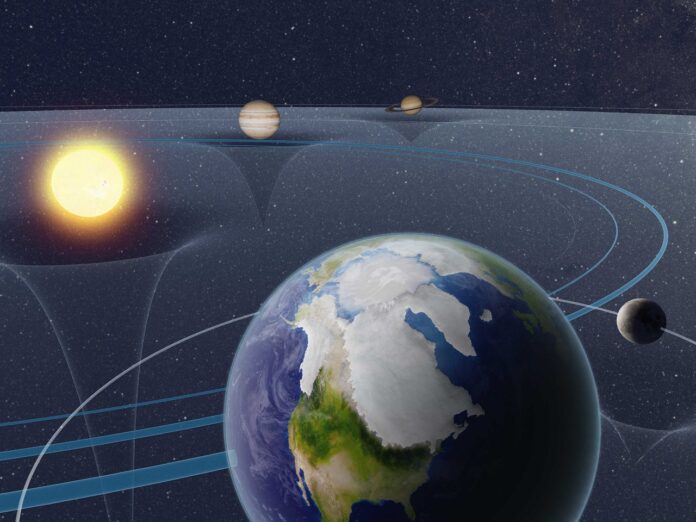Analyses of deep-sea sediment cores and other paleoclimatic archives have established the glacial-interglacial climate cycles during the Pleistocene. These cycles are linked to the dynamics of the ice sheets, which are influenced by variations in astronomical forcings. The primary periodicity of glacial-interglacial cycles moved from 41 kyr in the early Pleistocene is one of the remaining issues with these cycles.
A research team has utilized an improved computer model made up of climatologists and an astronomer to recreate the cycle of ice ages (glacial periods) that occurred between 1.6 and 1.2 million years ago. The findings demonstrate that the glacial cycle was primarily driven by astronomical forces, similar to how astronomical factors operate in the present day.
This will help us to understand the ice sheets’ past, present, and future, as well as the climate of the Earth. Due to the gravitational pull of the Sun, Moon, and other planets, Earth’s orbit around the Sun and the direction of its spin axis steadily alter over time. Due to variations in the distribution of sunlight and the contrast between the seasons, these astronomical factors have an impact on the Earth’s ecosystem. Ice sheets are particularly sensitive to these outside pressures, which cause a cycle between glacial and interglacial eras.
The glacial-interglacial cycle that exists today lasts roughly 100,000 years, whereas the glacial cycle in the early Pleistocene (approximately 800,000 years ago) changed more quickly and had a lifespan of only 40,000 years. Although the cause of this alteration has been attributed to astronomical external influences, the specifics of the mechanism are yet unknown. Through the improvement of geological data and the growth of theoretical research, it has recently become able to examine the function of astronomical forces in more detail.
A team led by Yasuto Watanabe at the University of Tokyo used an enhanced climatic computer model to study the early Pleistocene Epoch from 1.6 to 1.2 million years ago. These simulations take into account astronomical forces based on cutting-edge theory.
The large numerical simulations in this study accurately mimic the 40,000-year glacial cycle of the early Pleistocene, as shown by geological record evidence.
This study discovered three facts about the mechanisms through which astronomical influences caused climate changes in the early Pleistocene. The glacial cycle is determined by small differences in the amplitude of variation of the Earth’s spin axis orientation and orbit, the timing of deglaciation is determined by the position of the summer solstice on its orbit, and the duration of the interglacial period is determined by the timing of the change in spin axis orientation and the position of the summer solstice on its orbit.
Takashi Ito from the National Astronomical Observatory of Japan, a member of this research team who led the discussion on external astronomical forces, said, “As geological evidence from older times comes to light, it is becoming clear that the Earth had a different climatic regime than it does today. We must have a different understanding of the role of astronomical forcing in the distant past. The numerical simulations performed in this study reproduce the Pleistocene glacial-interglacial cycle not only well but also successfully explain the complex effects of how astronomical forcing drove the cycle at that time.”
This study is a starting point for studying glacial cycles beyond the present-day Earth.
Journal Reference:
- Watanabe, Y., Abe-Ouchi, A., Saito, F. et al. Astronomical forcing shaped the timing of early Pleistocene glacial cycles. Communication earth and environment. DOI:10.1038/s43247-023-00765-x
